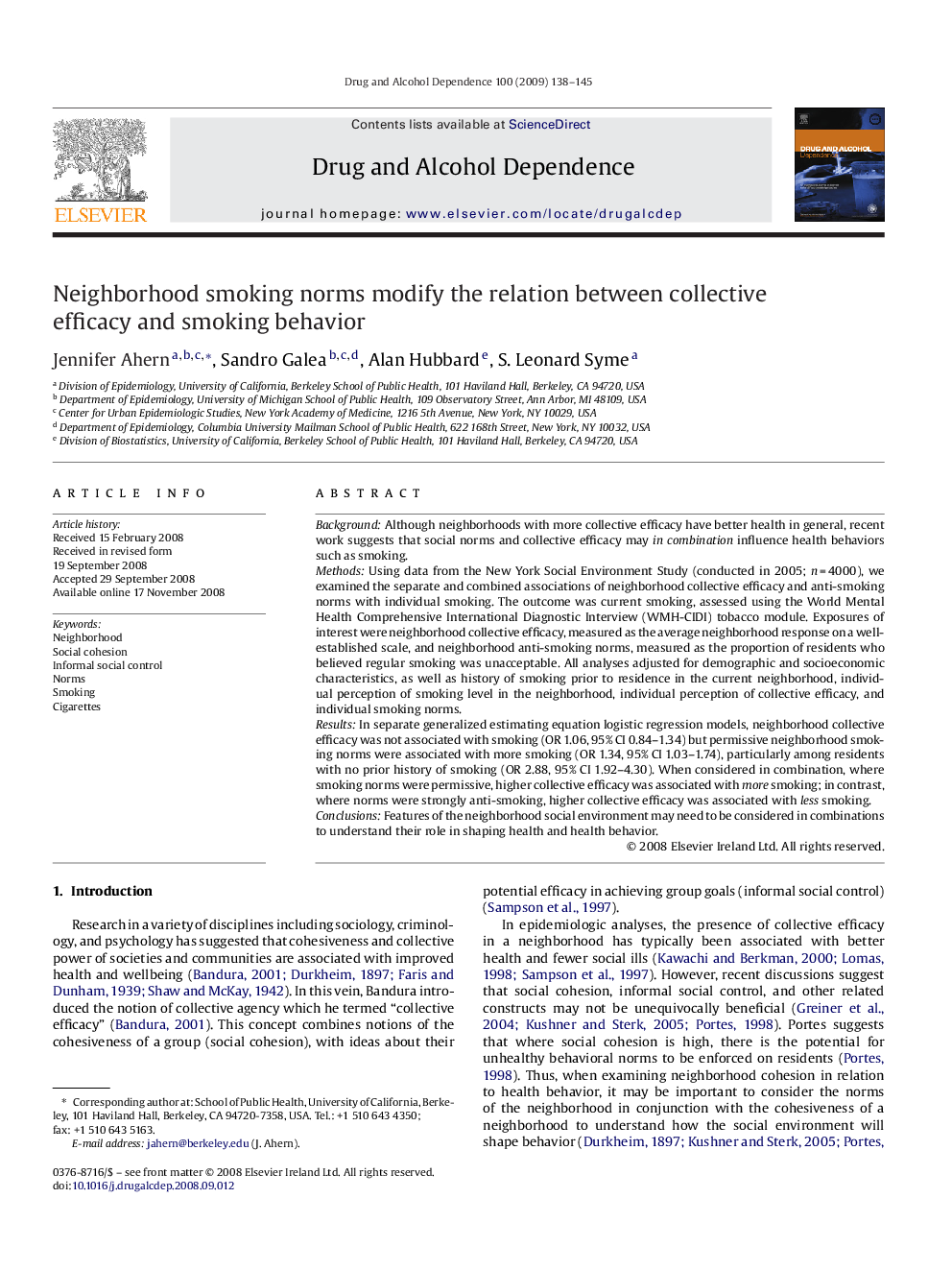| کد مقاله | کد نشریه | سال انتشار | مقاله انگلیسی | نسخه تمام متن |
|---|---|---|---|---|
| 1071003 | 1486192 | 2009 | 8 صفحه PDF | دانلود رایگان |

BackgroundAlthough neighborhoods with more collective efficacy have better health in general, recent work suggests that social norms and collective efficacy may in combination influence health behaviors such as smoking.MethodsUsing data from the New York Social Environment Study (conducted in 2005; n = 4000), we examined the separate and combined associations of neighborhood collective efficacy and anti-smoking norms with individual smoking. The outcome was current smoking, assessed using the World Mental Health Comprehensive International Diagnostic Interview (WMH-CIDI) tobacco module. Exposures of interest were neighborhood collective efficacy, measured as the average neighborhood response on a well-established scale, and neighborhood anti-smoking norms, measured as the proportion of residents who believed regular smoking was unacceptable. All analyses adjusted for demographic and socioeconomic characteristics, as well as history of smoking prior to residence in the current neighborhood, individual perception of smoking level in the neighborhood, individual perception of collective efficacy, and individual smoking norms.ResultsIn separate generalized estimating equation logistic regression models, neighborhood collective efficacy was not associated with smoking (OR 1.06, 95% CI 0.84–1.34) but permissive neighborhood smoking norms were associated with more smoking (OR 1.34, 95% CI 1.03–1.74), particularly among residents with no prior history of smoking (OR 2.88, 95% CI 1.92–4.30). When considered in combination, where smoking norms were permissive, higher collective efficacy was associated with more smoking; in contrast, where norms were strongly anti-smoking, higher collective efficacy was associated with less smoking.ConclusionsFeatures of the neighborhood social environment may need to be considered in combinations to understand their role in shaping health and health behavior.
Journal: Drug and Alcohol Dependence - Volume 100, Issues 1–2, 1 February 2009, Pages 138–145